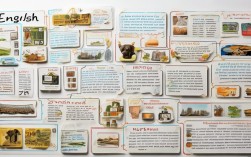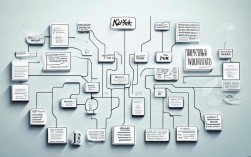数字英语思维导图
中心主题: Numbers in English (数字英语)

一级分支 1: 基础数字
- 核心概念: 构成所有数字的基础,是必须熟练掌握的。
- 二级分支:
- Cardinal Numbers (基数词 - 用于计数)
- 0-12: zero, one, two, three, four, five, six, seven, eight, nine, ten, eleven, twelve
- 13-19: thirteen (thir-), fourteen (four-), fifteen (fif-), sixteen, seventeen, eighteen, nineteen (nine-)
- 20-90 (整十): twenty, thirty, forty, fifty, sixty, seventy, eighty, ninety
- 21-99 (非整十): "twenty-one", "thirty-two", "forty-five" (用连字符连接)
- Ordinal Numbers (序数词 - 表示顺序)
- 规则变化:
- 1st: first
- 2nd: second
- 3rd: third
- 4th, 5th, 6th... 20th, 21st, 22nd, 23rd...: 在基数词后加
-th(注意 fifth, eighth, twelfth, ninth 的拼写变化)
- 用法: 用于日期、楼层、排名、顺序等。
例: May 1st (五月一日), the 5th floor (五楼), He came in first place (他得了第一名)。
- 规则变化:
- Special Numbers (特殊数字)
- 0: zero (美式), nought (英式), oh (电话/编号中), nil/love (比分中)
- 1,000: thousand
- 1,000,000: million
- 1,000,000,000: billion (美式/现代英式), milliard (旧式英式)
- Cardinal Numbers (基数词 - 用于计数)
一级分支 2: 数字构成与读法
- 核心概念: 理解大数字和分数、小数的构成规则。
- 二级分支:
- Large Numbers (大数字)
- 规则: 从右到左,每三位一组,用逗号分隔,分组单位为 thousand, million, billion。
- 读法: 逗号隔开的部分依次读,最后加上单位。
- 示例:
1,000-> one thousand23,456-> twenty-three thousand, four hundred and fifty-six7,890,123-> seven million, eight hundred and ninety thousand, one hundred and twenty-three
- Decimals (小数)
- 规则: 小数点读作 "point",小数点后的数字逐个读出。
- 示例:
14-> three point one four5-> zero point five / point five6-> ninety-eight point six
- Fractions (分数)
- 规则:
- 分子: 用基数词
- 分母: 用序数词
- 特殊分母: 2 (half), 4 (quarter)
- 示例:
1/2-> one half1/3-> one third2/3-> two thirds1/4-> one quarter / one fourth3/4-> three quarters / three fourths5/8-> five eighths
- 规则:
- Percentages (百分比)
- 规则: "per cent" 或缩写 "%"。
- 示例:
50%-> fifty percent / 50 percent
- Large Numbers (大数字)
一级分支 3: 数字的应用场景
- 核心概念: 将数字知识应用到实际生活中。
- 二级分支:
- Time (时间)
- 整点: "It's five o'clock."
- 半点: "It's half past six." (六点半)
- 一刻: "It's a quarter past seven." (七点一刻) / "It's a quarter to nine." (差一刻九点)
- 分钟: "It's ten twenty." (10:20) / "It's seven ten." (7:10)
- Dates (日期)
- 美式: Month + Day, Year
例: December 25, 2025 (读作: December twenty-fifth, twenty twenty-three)
- 英式: Day + Month + Year
例: 25th December 2025 (读作: the twenty-fifth of December, twenty twenty-three)
- 美式: Month + Day, Year
- Math (数学)
- 运算符号:
- : plus / and
- : minus
- : times / multiplied by
- : divided by
- : equals / is
- 示例: "What is two plus two?" -> "Two plus two equals four."
- 运算符号:
- Measurements (度量衡)
- 长度: 5 cm (five centimeters), 2 km (two kilometers)
- 重量: 1 kg (one kilogram), 500 g (five hundred grams)
- 温度: 25°C (twenty-five degrees Celsius), 77°F (seventy-seven degrees Fahrenheit)
- Phone Numbers & IDs (电话号码与身份证)
- 规则: 通常逐个数字读出,遇到两个相同数字可读 "double"。
- 示例:
138-1234-5678-> "one three eight, one two three four, five six seven eight" 或 "one three eight, one two three four, five six seven eight" - ID:
A1B2C3-> "A one B two C three"
- Time (时间)
一级分支 4: 常见数字习语与表达
- 核心概念: 了解数字在英语习语和文化中的特殊含义。
- 二级分支:
- Number 1 (第一名/最重要的)
- "You're number one!" (你是最棒的!)
- "My number one priority is..." (我的头等大事是...)
- Number 2 (第二名/次要的)
"He's number two in the company." (他是公司二号人物。)
- Number 7 (幸运数字)
在许多文化中(尤其西方)是幸运数字。
- Number 13 (不祥之兆)
- "Triskaidekaphobia" 是对数字13的恐惧症。
- 很多酒店没有13楼,直接跳到14楼。
- Dozen (一打)
- "a dozen eggs" (一打鸡蛋)
- "a baker's dozen" (13个,源自面包师为了避免被少收罚款而多给一个)
- Score (二十)
常用于习语,如 "four score and seven years ago" (八十七年前,出自林肯的葛底斯堡演说)。
- Other Expressions (其他表达)
- "A million thanks" (非常感谢)
- "It cost a fortune" (它花了一大笔钱,夸张用法)
- "Take a number" (排队取号)
- "Two's company, three's a crowd" (两人成伴,三人则嫌)
- "On second thought" (再一想,第二反应)
- Number 1 (第一名/最重要的)
一级分支 5: 易混淆点与注意事项
- 核心概念: 避免常见的错误。
- 二级分支:
- Hundred / Thousand / Million
- 规则: 当这些词前有具体数字时,本身不加 's'。
- 正确: "two hundred people"
- 错误: "two hundreds people"
- 例外: 当它们用于表示“数百/数千/数百万”的泛指时,用复数。
正确: "Hundreds of people came." (成百上千的人来了。)
- 规则: 当这些词前有具体数字时,本身不加 's'。
- And 的使用
- 英式英语: 在读数字时,hundred 后常加 "and"。
英式: "one hundred and fifty"
- 美式英语: "and" 通常省略。
美式: "one hundred fifty"
- 两者都正确,但需注意区分。
- 英式英语: 在读数字时,hundred 后常加 "and"。
- Billion 的差异
- 美式/现代英式: 1,000,000,000 (十亿)
- 旧式英式: 1,000,000,000,000 (万亿)
- 现在交流中,基本都采用美式标准。
- 0 的读法
- 根据上下文选择
zero,nought,oh或nil,避免混淆。
- 根据上下文选择
- Hundred / Thousand / Million











